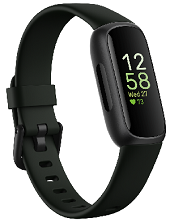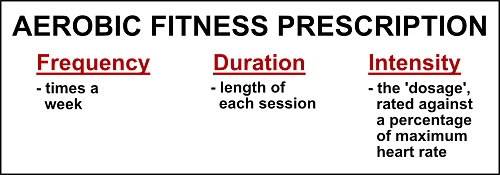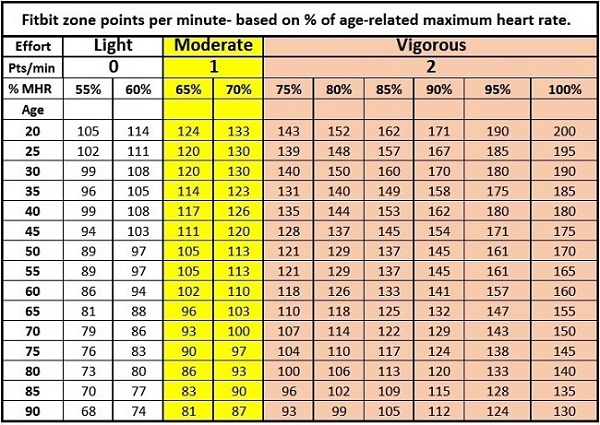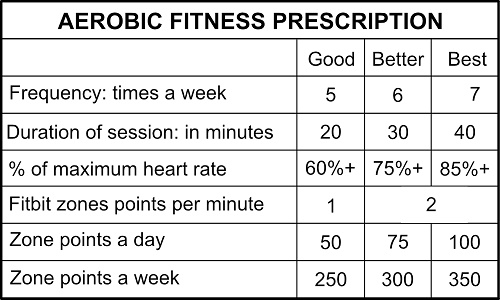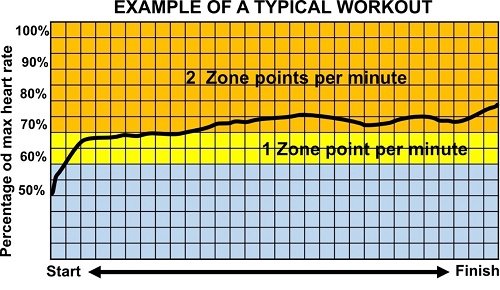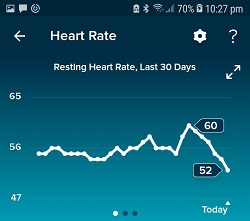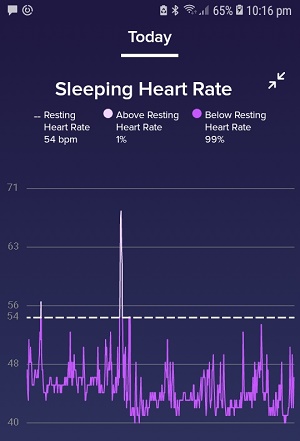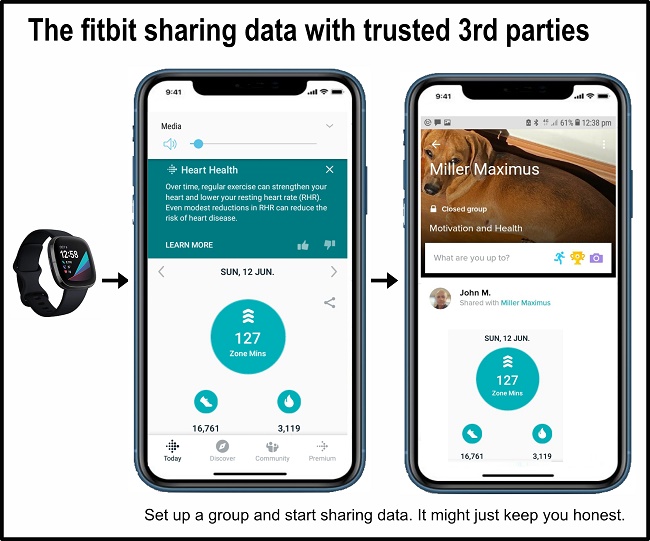|
|
||||||||||||||||||||||||||
|
20m run test of aerobic fitness
Back in Alignment musculo-skeletal health program
Member of the Frontline Primary Health Care Network
|
Fitbit zone points, where time meets effort – rated against heart rate.
Trying to improve your aerobic fitness without an exercise prescription that includes frequency, duration and intensity is like taking a pill that comes without an active dosage and without instructions on how often to take it.
Without a definition of intensity, based on time and heart rate, the exercise guidelines recommended by the American College of Sports Medicine and the Centre for Disease Control are an unscientific nonsense: ‘All healthy adults aged 18–65 yr should participate in moderate intensity aerobic physical activity for a minimum of 30 min on five days per week, or vigorous intensity aerobic activity for a minimum of 20 min on three days per week.’ T his sort of prescribing routine is one of the root causes of the inability of the medical industry to restore people with general metabolic dysfunction to good health. Doctors can’t complain that they’re too busy when their diagnostic and prescribing practices guarantee that their customers will soon be back on the surgery doorstep.
A good aerobic fitness program requires a dosage involving frequency (times a week), duration (length of each session) and intensity of effort (based on heart rate). This rule forms the basis of the Fitbit Aerobic Fitness Zone System
If you’re serious about becoming aerobically fitter, merely recording time, steps or distance is pointless unless effort is also taken into account.
Fitbit calculates the number of zone points you’ve
accumulated using a formula based the actual time (T) in minutes,
maximum heart rate, resting heart rate and heart rate reserve. Below it
a rough guide, based on percentage of maximum heart rate. It’s a close
estimation of how Fitbit calculates the Fitbit zones.
If you’re diligent in your training, over the weeks and
months you’ll notice that you’re able to train with a higher heart rate
for longer periods of time. This means you’re getting fitter, your
metabolic system is becoming healthier. If you’re diligent in your training, over the weeks and months you’ll notice that you’re able to train with a higher heart rate for longer periods of time. This means you’re getting fitter, your metabolic system is becoming healthier. A minimum of 250 zone points per week (ZPPW) is good, 300 is better, 350 is best and 400 is ‘bestest’. I’ve called over 400 ZPPW a week, ‘defrag territory’. Once you start getting 300 or more ZPPW a week you’ll keep yourself in pretty good shape. If you want to achieve huge gains in your aerobic fitness and metabolic health, aim at (at least) 400 ZPPW.
They say that your estimated, age-related maximum heart rate (MHR) is (roughly) 220 – your age. Therefore, the maximum heart rate of a 40-year-old person is said to be 180bpm. Aiming to work at 70% of maximum heart rate for a 40-year-old is roughly 125 bpm. If you’re a 40-year-old person and you’re in good physical condition and aerobically trained, you’ll be able to sustain 125 bpm for at least 40 minutes.
If you’re fitter or less fit than the average fit person, you may need to modify the recommendation.
In a nutshell, here's how it will work
Here’s what the typical workout looks like.
How long do you need to exercise - to reach your target number of Fitbit zone points per week?
It all depends on how often you train, how long you train and at what heart rate.
Five, 30-minute sessions a week with your heart rate at 75% of your MHR (2 point per minute) will set you up for 300 fitbit zone points. Do that for a few months and you’ll really feel the difference.
What this means is that the higher your heart rate during your workouts, the less time you have to spend each week getting your recommended number of Fitbit zone points.
If you’re in an occupation where you’re moving around all day – if you’re a gardener, lawn mower, brick layer, parcel deliverer ... – then you may get some of your aerobic activity during work time. Some of the fittest and healthiest people I’ve seen in the last few years were staff in a botanic garden who spent all week tending the plants, digging up weeds and carting rubbish.
If you’ve got a sedentary occupation then you need to make extra provision – running, cycling, swimming or using the cardio equipment in the gym – to get the amount of aerobic exercise your body needs. If you don’t, sooner or later you can expect key body systems to become dysfunctional. Then it’s ambulances at the bottom of the cliff for the rest of your life, or until you wake up to yourself.
What’s happens in our sedentary society is that people do not realize just how little activity they do; they don’t realize just how far they’ve let themselves go. And if they are active, like walking every day, they’re not aware of just how fit they are either. Most people never measure their level of aerobic fitness.
HOW TO MAINTAIN AN AEROBIC EXERCISE PROGRAM
Aerobic fitness training recommendations – good, better, best
Here they are again.
If you’re loaded up with metabolic dysfunction, I recommend you train twice a day.
You may like to split your workout, one in the morning and one in the evening, each of 20 – 30 minutes.
If you’ve got any of the symptoms of general metabolic dysfunction, 8 sessions a week would be good, 10 better and 12 best. Too much you say? Well, not if you want to fix up the body system dysfunctions caused by lifestyle neglect.
You can vary the sessions, some hard, some easy, some long, some short.
A WORD OF CAUTION
If you’ve been sedentary for years, before you embark on your aerobic fitness program it would be wise to get yourself checked out by a doctor to make sure you’re not going to keel over after the first couple of minutes of your first activity session.
A WORD ABOUT RESTING HEART RATE – these two images are from the same day.
Share your results with
trusted third parties
A unique feature of the Fitbit system is that you can share your results with other Fitbit users. Once you’ve set up the sharing system the members of your group will be able to see how they’re going and give each other encouragement. It’s a highly motivating system.
Fitbit, a medical grade device
Arthur C Clarke said, ‘What ever you think about the future it will be utterly fantastic.’ It is.
Fitbit is a medical grade wearable device which will provide yourself, your medical, fitness, nutritional and mental health advisors with an enormous amount of information about your health, fitness and wellbeing.
You’ll find it a wonderful motivator.
It’s a record keeper par excellence:
- Steps
In the meantime stay tuned, highly tuned.
7 Salvado Place, Stirling (Canberra) ACT 2611 Australia 61 2 6288 7703
|
|||||||||||||||||||||||||



